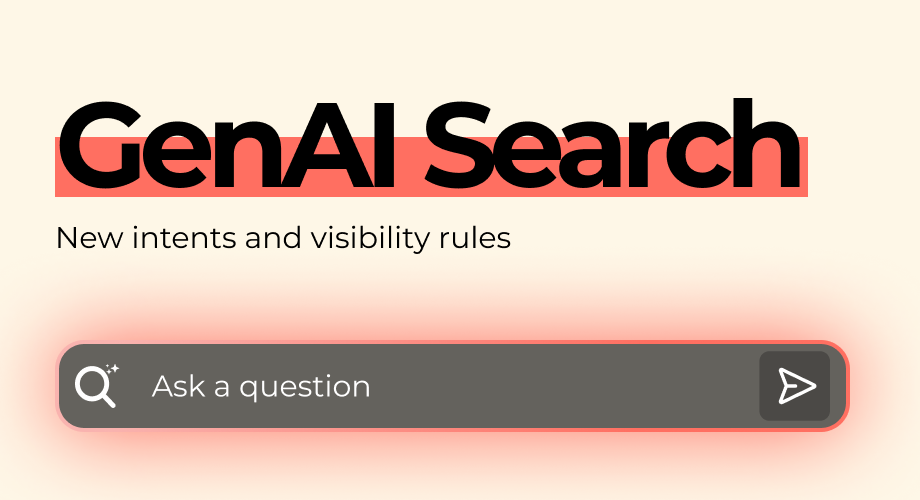Fraud in online advertising continues to evolve rapidly, and without effective solutions, companies risk losing not only their budgets but also the trust of their partners.
In this article, we will discuss why it is crucial to use anti-fraud solutions to maintain high-quality advertising traffic — something we care deeply about at AdOperator, where traffic quality and transparency are non-negotiable. We have invited Alen, CEO of Kaminari Click, as an expert in anti-fraud with years of experience in the affiliate industry. He and his team work daily on improving fraud prevention technologies, helping partners minimize risks and increase the efficiency of their advertising campaigns.

Tatiana: Alen, let’s start from the beginning — how did Kaminari Click come to life? And what were the biggest challenges you faced early on?
Alen: Kaminari Click was initially an in-house solution for the ad network Kadam. We developed an anti-fraud system that quickly proved its effectiveness, and it soon became clear that we needed to scale and capture the market. That’s how our product expanded beyond in-house use and became an independent solution.
We understand how crucial it is to protect budgets from fraud. Today, our clients include major ad networks and high-traffic products that need to analyze hundreds of millions of clicks every month.
Competing with the giants of the anti-fraud industry isn’t easy, but we offer more than just standard solutions. Our algorithms detect complex fraud schemes, while our flexibility and speed of adaptation make us a reliable partner for the market. Client trust is the key measure of our effectiveness, and we continue to evolve to uphold it every day.
Tatiana: That makes total sense — especially given how fast fraud tactics are evolving. What kinds of schemes are you seeing most often now? And how are they changing?
Alen: Fraud in advertising traffic is constantly evolving, adapting to new protection technologies. There are countless fraud schemes, but they are generally categorized into four main types: crawlers, spoofing, automated fraud, incorrect requests, bad reputation IPs, and blocked hints.
Fraud is on the rise, and in 2025, it will continue to grow. Fraudsters are already leveraging machine learning, advanced browser emulators, and VPNs to make their bots appear as real users.
Tatiana: For those who might be new to the topic — how would you define “antifraud”? And why is it such a critical area for ad networks today?
Alen: Antifraud refers to technologies and methodologies designed to detect and prevent fraudulent activities and bot traffic in advertising. In the context of ad networks, it helps protect advertisers from low-quality or fraudulent traffic, which can include bots, click farms, fraudulent conversions, and many other types of fraud.
For ad networks, this issue is critical because fraud reduces advertiser trust, damages their ROI, and can lead to lost partnerships. If a network does not combat fraud, its reputation declines, and the quality of its traffic deteriorates.
Tatiana: I think most people underestimate how fast fraudsters are adapting. From your perspective, why is it more important than ever to stay ahead of ad fraud right now?
Alen: There are several reasons:
The rise of automated fraud. With advancements in AI and bot technology, fraudsters are becoming smarter, using sophisticated techniques to bypass protection.
Stricter regulations. Laws like GDPR and CCPA require transparency in data processing, and advertisers are setting higher standards for traffic quality.
Increasing competition among ad platforms. As traffic costs rise, advertisers are more selective in choosing partners, prioritizing quality.
Changes in monetization models. Many are shifting from CPM to CPA and other performance-based models, where fraud has a significant impact on budgets.
Failing to combat fraud can lead to wasted ad spend and damage a company's reputation. No one wants to be known as the network with "low conversions."
What fraud schemes do cybercriminals use?
Tatiana: You mentioned that fraud schemes are becoming more complex. Could you walk us through some of the main tactics cybercriminals are using today?
Alen: Ad traffic fraud is constantly evolving, adapting to new protection technologies. There are countless fraud schemes, but the main types are typically categorized into four key groups: crawlers, spoofing, automated fraud, incorrect requests, bad reputation IPs, and blocked hints.
Tatiana: I completely agree — detecting fraud isn’t as simple as flipping a switch. From your experience, what are the biggest challenges ad networks run into when they try to deal with it?
Alen: The biggest challenge is fraud detection complexity. Fraudsters use AI-driven bots, hide traffic sources, and ad networks often work with intermediaries, making transparency difficult. Another major issue is balancing fraud filters—if they are too strict, real users are lost; if they are too lenient, advertisers leave due to fraud. On top of that, networks face disputes with partners, regulatory pressure (GDPR, CCPA), and high anti-fraud costs.
Tatiana: What common fraud schemes do fraudsters use? Can you share real cases and insights?
Alen: One of the standout examples of fraud prevention is our work with the ad network Kadam. We detected a high percentage of bot traffic, which was negatively impacting advertising campaigns.
We identified:
Suspicious user activity with abnormally low time on site.
User-Agent spoofing to disguise bot traffic.
Use of mobile proxy networks to mimic real users.
How we solved it:
Real-time behavioral analysis to detect anomalies.
Filtering suspicious IPs and unnatural click patterns.
Implementing intelligent algorithms to assess fraud probability at the pre-bid level.
Results:
We successfully reduced fraudulent traffic by 37%, which improved advertisers' ROI and lowered wasted spend on invalid impressions and clicks.

Pain Points of Ad Networks and Their Solutions
Tatiana: Who is the target audience for Kaminari Click?
Alen: Our anti-fraud solution is designed for product owners, ad networks, media buying teams, and CPA networks. However, our core customer base primarily consists of ad networks.
Initially, we focused on ad networks because Kaminari Click originated as an in-house solution for Kadam. But today, we are an independent product, serving a much wider market.
Tatiana: We all know bots are a problem, but I feel like a lot of people don’t realize just how damaging they can be. What kind of impact do they really have on ad networks?
Alen: Bots are not just a budget drain; they strike at analytics, conversions, and reputation. Money is wasted, real users don’t reach the product, and ad platforms can even block accounts. As a result, instead of business growth, there are continuous losses.
We conducted customer development interviews and identified the key issues faced by ad networks:
High fraud levels reduce trust, decrease ROI, and demand reliable protection.
Fraud drains a significant portion of the budget without any return.
Challenges in traffic quality assessment depending on the format: Different traffic formats require different evaluation methods. There is a need for flexible quality assessment settings to effectively optimize campaigns for various formats.
Lack of evidence to claim a refund from a partner who provided fraudulent traffic.
Tatiana: That’s a great point. So it’s not just about blocking fraud — it’s also about understanding traffic quality and segmenting it properly, right? At AdOperator, we see this every day — proper segmentation helps us deliver clean traffic that performs better and builds trust.
Alen: Not all traffic is equally valuable. Quality traffic generates leads and conversions, while a mixed stream without filtering may include bots and low-value audiences. Segmentation allows ad networks to filter out poor-quality traffic, improve ROI, and build transparent relationships with partners. For affiliate networks, this is also a tool for enhancing reputation: proper traffic distribution between advertisers helps them achieve better results, while networks strengthen trust and long-term relationships with advertisers.
Tatiana: Feedback is everything. If advertisers start losing trust, it hits hard. How have you seen negative feedback affect networks in the long run?
Alen: Negative feedback signals issues with traffic quality, which reduces advertisers' trust. This leads to client churn, loss of revenue, and deterioration of the network's market position. In the long term, a poor reputation can limit access to partnerships with high-quality traffic sources.
Tatiana: Many networks struggle with the “build or buy” decision. From your view, what’s the real difference between developing your own anti-fraud tools versus using external solutions?
Alen: This is a question most of our partners ask. An in-house anti-fraud system is tailored specifically to the product it was developed for; it provides full control over advertising campaigns but requires time and resources to maintain. External solutions, on the other hand, are much quicker to integrate and are significantly cheaper than developing your own. In my opinion, the optimal balance is a combined approach: in-house analysis takes into account the unique features of the network, while external anti-fraud solutions add scalability and protection against new types of fraud. This tandem allows for more effective traffic filtering, reducing risks and increasing advertiser trust.
Tatiana: How Does Fraud Impact Traffic in the RTB Model?
Alen: Fraud in RTB auctions disrupts fair competition: traffic prices rise, while advertisers get fewer real customers. As a result, they waste more of their budgets, and purchasing algorithms perform worse. This decreases trust in RTB traffic and makes it less efficient.
RTB networks need anti-fraud at all integration levels. As I mentioned earlier, partners may recognize the presence of fraudulent traffic, but without proof, they won’t offer refunds. Kaminari provides complete click reports, enabling networks to get refunds for low-quality traffic from partners. Our clients actively use this feature.
The Future of Anti-Fraud and Trends in 2025
Tatiana: Looking ahead — what are the biggest fraud trends you expect to see in 2025? And how should networks prepare for them?
Alen: Fraud is becoming smarter and more sophisticated. Every year, new types of fraudulent schemes emerge, and the key challenge is to adapt to these changes and develop new detection methods. Some of the main fraud trends for 2025 include:
AI bots – Fraudsters disguise them as real users, making detection more difficult.
Deepfake advertising – Fake creatives and user data.
Automated fraud networks – Neural networks help bypass protection.
Native fraud – Fraudsters use "clean" IPs and proxies.
Tougher regulatory control – New laws complicate data analysis.
Tatiana: Everyone’s talking about AI — and fraudsters are using it too. How is AI helping us fight back?
Alen: In the past, there were filters, but now AI learns on its own:
ML analyzes behavior and spots unnatural patterns.
AI detects anomalies – from too-perfect conversions to suspicious schemes.
Quick adaptation – AI adjusts to new fraud methods.
In 2025, without powerful AI-based anti-fraud systems, affiliate networks will struggle to combat fraud.
Fraud Statistics and Figures
Tatiana: Can you share some numbers from your experience? How much fraud is really out there — and how much are you detecting?
Alen: Statistically, advertising networks lose 25-40% of their budgets annually just due to fraud. Our system conducts millions of checks every day, and over the course of the year, this number reaches several billion.
When it comes to verticals most susceptible to fraud, gambling, crypto, and dating stand out. These verticals are the most attractive to fraudsters, as they are among the most popular and well-paying.
Tatiana: What is the main advice you would give to advertising networks in the fight against fraud?
Alen: Stay proactive – fraud is becoming more sophisticated, and budget losses are increasing.
To minimize risks, use anti-fraud solutions – pre-bid filtering reduces losses and improves ROI. Analyze traffic, work with reliable partners, and adapt – fraudsters are evolving, and protection must stay ahead of them.
Tatiana: I love this idea — that anti-fraud isn’t a cost, it’s protection. That’s exactly how we think about it at AdOperator too. Can you explain why it’s such a strategic investment?
Alen: Fraud in advertising will always be a relevant issue, and given that more fraudulent schemes emerge each year, it’s not just a problem, but a real threat to advertisers, networks, and partners. Without protection, budgets are wasted on bots, and real users get lost in the flow of low-quality traffic.
Fighting fraud is necessary and possible. Investing in anti-fraud solutions is not an expense, but a protection of the business, reputation, and profits. The sooner companies implement effective filtering tools, the higher their chances of success in a competitive environment.
Tatiana: Are you planning to release new features and fraud detection technologies? How will Kaminari Click adapt to changes?
Alen: Yes, in 2025, we plan to release new fraud detection technologies as fraudulent schemes constantly evolve. Kaminari Click will adapt to these changes by improving algorithms and adding new features.
Currently, our system includes AI-based user behavior analysis, Pre-bid and Post-bid filtering, bot protection, and advanced traffic analytics. In the future, we will enhance detection of complex fraud schemes, implement new traffic validation mechanisms, and expand integrations. Our goal is to provide advertisers and networks with maximum protection and transparency.
Tatiana: That sounds like a solid plan. It’s clear that fraud prevention isn’t just a technical challenge — it’s a strategic priority for every serious player in digital advertising. Thanks so much, Alen, for sharing your expertise and giving us a deeper look into how platforms like are helping networks stay ahead.
Let’s hope that in 2025, more companies will treat traffic quality as a core part of their business — not just a checkbox.


